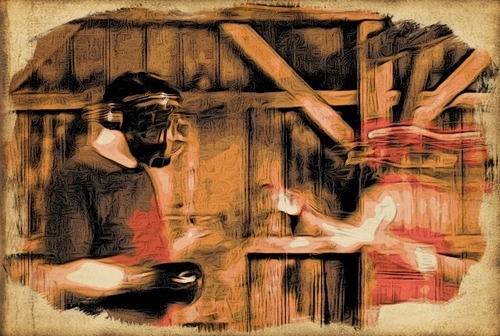
CHRONICLES OF THE DOKA
#18 in a continuing series; 84 days in the teaching life of an American sensei in 1999
My first group class of the evening consists of children yellow thru orange belt. It’s held at the local YMCA ten minutes from my home. I have been teaching there since 1979.
When people ask me whether I have a school, I usually respond, “No, I have a following instead.” I’ve had a rare run as an American sensei. If we zoom to present times, I’ve taught continuously for 41 years, without fail, every week averaging 25-35 classes. So when it comes to teaching, I’ve lived it.
In the twenty years prior I also never had a class cancel for lack of attendance. I must be doing something right. I had so many young students enrolled years earlier that I needed to split the yellow and orange belts from the blue and greens to keep class size manageable. I’m talking 35 students in some classes. Tonight, Dharman and I will attempt to guide the kids a few more inches along the martial trail. That’s how it is with teaching children—one inch at a time.
I have more pressing concerns in the adult class that follows. For years there have been indicators that the adult karate market is thinning out in the U.S. America’s fascination for karate has waned. It’s not that the traditional arts offer us less today. It’s that we have conditioned our society to always choose something ‘new.’
I drill the class on basics. One can’t get enough fundamentals. For openers, I present a straightforward martial meal for everyone. Classic step/punch, line drill exercises.
That final class of the evening is held at the Chatham Club several minutes away. This program represents the epicenter of my work. I change out of my gi to drive there.
Dharman once excitedly told me, “I found a shortcut to get to the Club. It will shave a few minutes off your driving.”
“I am in no hurry.” I told him. I’ll stick to the old route.”
Dharman short cut may have lasted a few months, perhaps shaving a minute or two off an eight-minute drive. But as weeks of a hectic teaching pace wore him down, he realized why I was in no hurry.
“One should take time to transition,” I told him. Don’t race to your next class. It’s unnatural. Mellow into it. Look for that ritual space to recoup spent energy and to refocus your mind for the next group. A balanced perspective will always sustain you far longer.
Rushing may be necessary once in a while, but when you get used to rushing about all the time, you are denying your body its natural pace for engaging your art and your life as a whole, and you will slowly tilt off balance.
